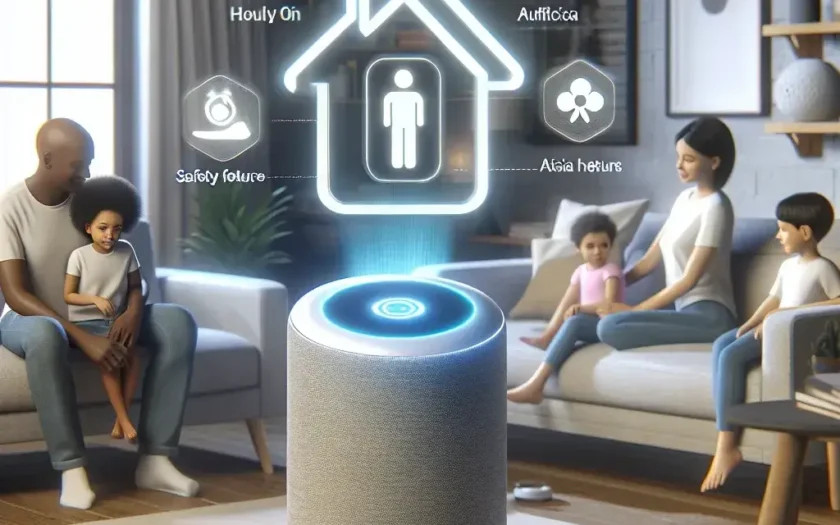Introduction
In an era where technology plays an integral role in our daily lives, Google has made significant strides with its Google Nest ecosystem. With the recent addition of AI safety features, Google Nest is redefining home security for U.S. households. This article dives deep into these innovations, their implications, and what they mean for the future of smart home technology.
The Evolution of Home Security
Home security has come a long way from traditional locks and alarms. The integration of smart technology has transformed how we protect our homes. Google Nest, a pioneer in this space, has consistently pushed the envelope by introducing innovative features that not only enhance security but also offer convenience and peace of mind.
Historical Context
Before delving into the new AI features, it’s essential to understand the evolution of security systems. In the early 2000s, home security mainly relied on physical barriers, such as deadbolts and window locks. As technology advanced, alarm systems emerged, followed by the introduction of smart cameras and sensors. Google Nest was one of the first to combine these elements into a cohesive ecosystem, allowing homeowners to monitor their properties remotely.
New AI Safety Features by Google Nest
1. Enhanced Motion Detection
One of the standout features of the new Google Nest update is the enhanced motion detection system powered by AI. This system uses machine learning algorithms to differentiate between humans, pets, and other moving objects, significantly reducing false alarms. For example, if your cat wanders into the frame, the system won’t trigger a security alert.
2. Smart Alerts
Google Nest has also introduced smart alerts, which send notifications to homeowners’ devices when unusual activity is detected. This goes beyond simple motion alerts; the AI analyzes patterns and can distinguish between normal and suspicious behavior. For instance, if a package is delivered, the system recognizes it and sends a friendly reminder rather than a safety alert.
3. Facial Recognition Technology
Another crucial addition is the integration of facial recognition technology. This feature allows homeowners to receive alerts when an unfamiliar face is detected on their property. Users can customize their settings to recognize friends and family, ensuring that they are informed about who is coming and going.
4. Integrated Emergency Response
Perhaps one of the most critical innovations is the automatic emergency response feature. In case of a verified intrusion, Google Nest can swiftly alert local law enforcement or emergency services, providing them with vital information captured by the cameras. This feature can potentially reduce response times and enhance safety.
Pros and Cons of AI Safety Features
Pros
- Increased Security: The AI capabilities significantly enhance the security of U.S. households by reducing false alarms and providing real-time alerts.
- User-Friendly: Google Nest’s intuitive interface makes it easy for homeowners to navigate their security settings and receive notifications.
- Integration with Other Devices: The new features work seamlessly with other smart devices within the Google Nest ecosystem, creating a comprehensive home security solution.
Cons
- Privacy Concerns: The use of facial recognition and extensive monitoring raises privacy issues for some users, who may be uncomfortable with constant surveillance.
- Dependence on Internet Connectivity: As with many smart home devices, a stable internet connection is essential for these features to function optimally.
Future Predictions: The Next Frontier of Smart Home Security
As technology continues to evolve, the future of smart home security looks promising. We can expect even more advanced AI features that will enhance safety and convenience. For instance, the integration of predictive analytics could allow systems to anticipate potential threats based on user behavior and local crime statistics.
Cultural Relevance
In today’s world, where home security is paramount, the advancements made by Google Nest resonate with a broader cultural movement towards safety and peace of mind. Families are increasingly looking for ways to protect their loved ones and properties, and technology is at the forefront of this shift.
Real-World Examples
Numerous U.S. households have already benefited from the new Google Nest AI features. For instance, Sarah, a mother of two, shared how the enhanced motion detection feature helped her avoid countless false alarms triggered by her children playing outside. Similarly, the facial recognition feature has allowed her to keep track of who visits her home, providing her with additional peace of mind.
Expert Quotes
According to tech industry expert Mark Thompson, “The integration of AI in home security systems like Google Nest is a game-changer. It not only offers enhanced safety but also empowers users to take control of their home environment.”
Conclusion
Google Nest’s addition of AI safety features marks a significant milestone in the realm of smart home technology. By prioritizing security and integrating advanced capabilities, Google is setting new standards for what homeowners can expect from their home security systems. As we look to the future, the potential for innovation is limitless, promising even safer and more effective solutions for U.S. households.

